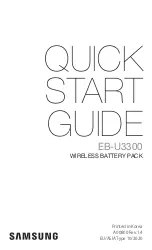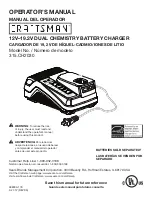
J
A
JA
DISS
T
T
P
T
u
(5)
The θ
JA
is largely driven by the board layout. For more information about traditional and new thermal metrics,
see the
Semiconductor and IC Package Thermal Metrics Application Report
. Under typical conditions, the time
spent in this state is very short.
9.3.2.4 Battery Short and Over Current Protection
In order to protect the device from over current and prevent excessive battery discharge current, the BQ25157
detects if the current on the battery FET exceeds I
BAT_OCP
. If the short circuit limit is reached for the deglitch time
(t
DGL_OCP
), the battery discharge FET is turned off and start operating in hiccup mode, re-enabling the BATFET
t
REC_SC
(250 ms) after being turned off by the over-current condition. If the over-current condition is triggered
upon retry for 3 to 7 consecutive times, the BATFET will then remain off until the part is reset or until Vin is
connected and valid. If the over-current condition and hiccup operation occurs while in supplement mode where
VIN is already present, VIN must be toggled in order for BATFET to be enabled and start another detection
cycle.
This process protects the internal FET from over current. During this event PMID will likely droop and cause the
system to shut down. It is recommended that the host read the Faults Register after waking up to determine the
cause of the event.
In the case where the battery is suddenly shorted while charging and VBAT drops below V
SHORT
, a fast
comparator quickly reduces the charge current to I
PRECHARGE
preventing fast charge current to be momentarily
injected to the battery while shorted.
9.3.2.5 PMID Short Circuit
A short on the PMID pin is detected when the PMID voltage drops below 1.6 V (PMID short threshold). PMID
short threshold has a 200-mV hysteresis. When this occurs, the input FET temporarily disconnects IN for up to
200 µs to prevent stress on the device if a sudden short condition happens, before allowing a softstart on the
PMID output.
9.3.3 ADC
The device uses a 16-bit ADC to report information on the input voltage, input current, PMID voltage, battery
voltage, battery charge current, and TS pin voltage of the device. It can also make measurements from an
external source through the ADCIN pin.
The host may select the function desired, perform an ADC read, and then read the values in the ADC registers.
The details for the register functions are in the
.
9.3.3.1 ADC Operation in Active Battery Mode and Low Power Mode
When the device is powered by the battery it is imperative that power consumption is minimized in order to
maximize battery life. In order to limit the number of ADC conversions, and hence power consumption, the ADC
conversions when in Active Battery Mode may be limited to a period determined by the ADC_READ_RATE bits.
On the case where the ADC_READ_RATE is set to Manual Mode, the host will have to set the
ADC_CONV_START bit to initiate the ADC conversion. Once the ADC conversion is completed and the data is
ready, the ADC_READY flag will be set and an interrupt will be sent to the host. In Low Power Mode the ADC
remains OFF for minimal IC power consumption. The host will need to switch to Active Battery Mode (set LP
high) before performing an ADC measurement.
9.3.3.2 ADC Operation When VIN Present
When VIN is present and VDD is powered from VIN, the ADC is constantly active, performing conversions
continuously on each channel in round robin fashion. This means that each channel is measured once about
every 250ms. The device will not send an interrupt after a conversion is complete since this would force the
device to constantly send ADC_READY interrupts that would overwhelm the host. The host will be able to read
the ADC results registers at any time. This is true even when V
IN
> V
OVP.
SLUSEC5 – DECEMBER 2020
Copyright © 2020 Texas Instruments Incorporated
21
Product Folder Links:
Summary of Contents for BQ25157
Page 107: ...D Max E Max 2 045 mm Min 1 645 mm Min 1 985 mm 1 585 mm...
Page 108: ......
Page 109: ......
















































